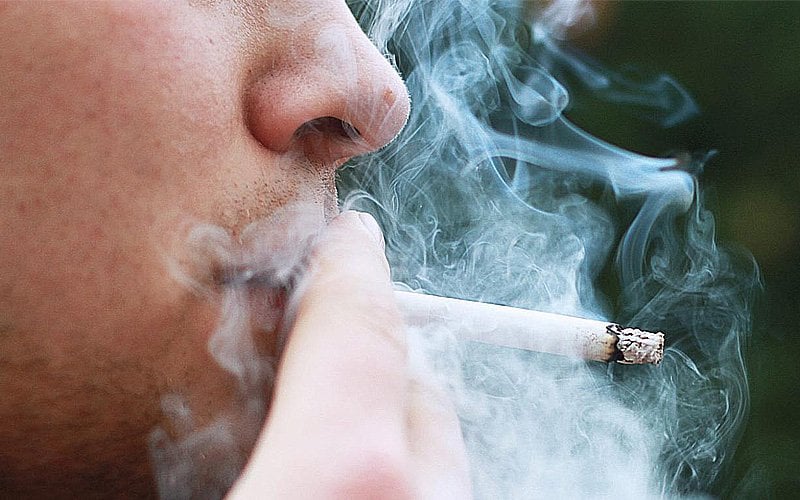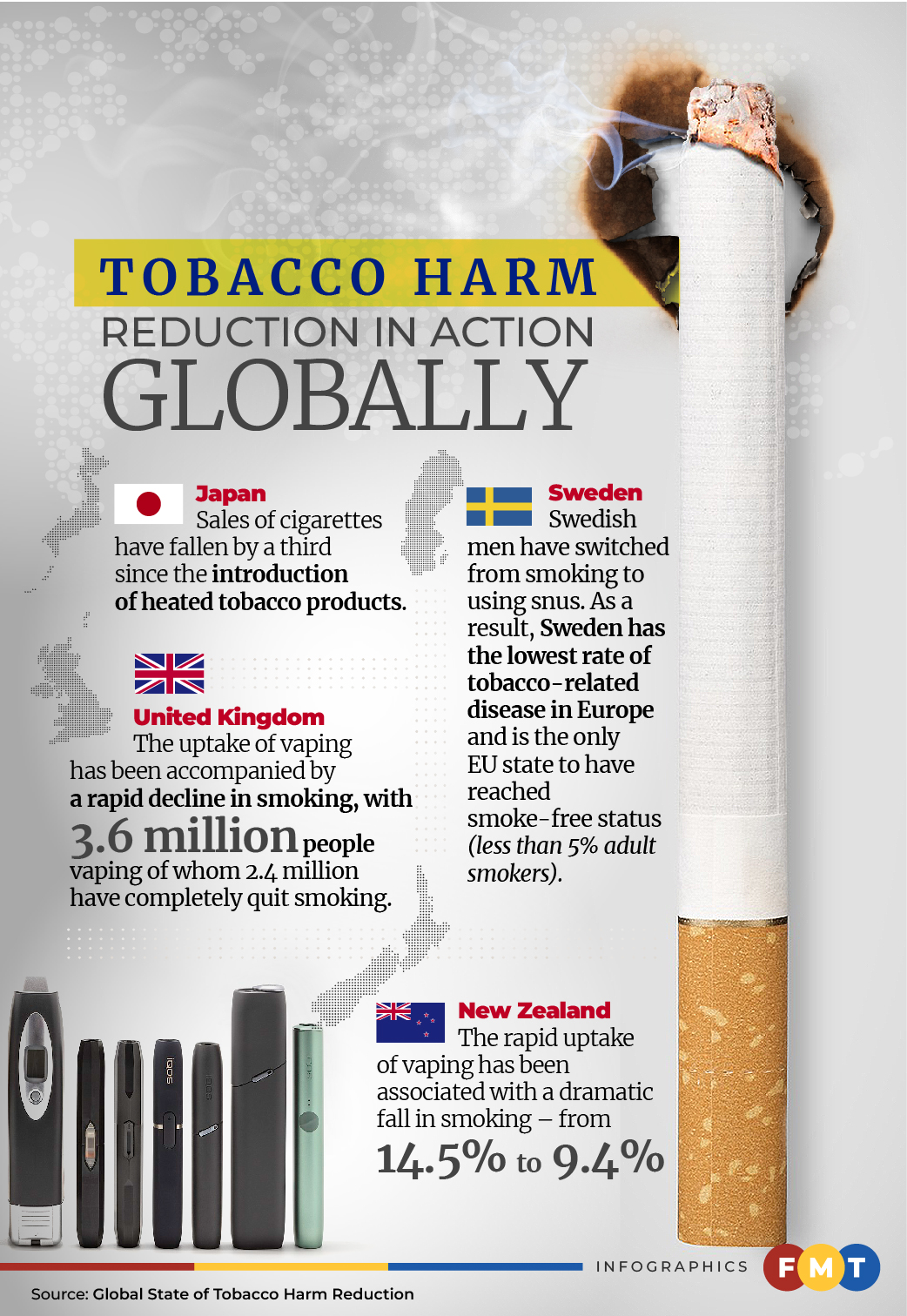
PETALING JAYA: No one can deny the smoking of cigarettes is a health hazard that has taken the lives of millions of people around the world. This has prompted governments to come out with legislation to restrict the consumption of tobacco products and, in some cases, to ban it.
The situation becomes more complicated with the rising popularity of safer nicotine products (SNP) such as e-cigarettes (vaping), heated tobacco products, and nicotine pouches which have been touted as being significantly less harmful than cigarettes.
The debate on the merits of prohibiting such products rages on. Malaysia, too, has been pulled into this debate over tobacco control, as evident in the formulation of the Control of Smoking Products for Public Health Bill 2023.
Dubbed the Generational Endgame Bill, it seeks to ban the use, possession and sale of cigarettes and vape products for those born after Jan 1, 2007.
In June, health minister Dr Zaliha Mustafa said the bill had been referred to the parliamentary select committee (PSC) on health for further review. This is the second time the bill had been referred to the PSC, after it was first tabled in 2022.
The 2019 National Health and Morbidity Survey reveals nearly 21.3% of the Malaysian adult population, or an estimated 4.8 million, are smokers. “This survey shows that 27,200 deaths every year in this country were due to smoking,” she said.
Zaliha stressed the need for joint action from all parties so that smoking is reduced to just 5% of the adult population and Malaysia becomes a “smoke-free country” by 2040.
In a twist of irony, Malaysia may have found an ally in this quest from an unlikely source – the CEO of a major tobacco company.
The CEO in question is Jacek Olczak of Philip Morris International (PMI), who stated his company’s goal is to promote a “future free of cigarettes”.
You would think such statements are typically the rallying cry of anti-tobacco activists rather than that of a tobacco company CEO.
Pivot to eradicating cigarettes
Olczak was referring to PMI’s pivot to promote the concept of tobacco harm reduction (THR) among the world’s estimated one billion cigarette smokers.
Essentially, harm reduction is a policy that seeks to reduce the harm caused by a dangerous activity rather than simply banning the activity itself. It recognises the reality that not everyone will be able to put a stop to these deeply ingrained behaviours.
THR involves the use of less harmful products consisting of e-cigarettes, heated tobacco products, and nicotine replacement therapy products. While not risk-free, these products are intended for smokers who would continue to smoke.
PMI’s transition away from cigarettes started over a decade ago with the goal of creating less harmful alternatives to cigarettes.
It has since poured over US$10.5 billion (RM47.4 billion) in science-based innovation and research to achieve this goal. This huge commitment included the setting up of a research and development (R&D) facility in Neuchatel, Switzerland, called the Cube.
The centre is home to over 1,100 scientists, engineers, technicians and support staff, all playing a role in helping PMI deliver its vision of a smoke-free future.
The problem with burning tobacco
We all know that cigarette smoking causes serious diseases which has led to millions of deaths. So, why is smoking so dangerous to health?
Cigarette smoke contains flavours from the tobacco blend, as well as nicotine that exists naturally in tobacco leaves. It’s these elements in the smoke that consumers enjoy while smoking.
However, the very same burning process also produces tar and over 6,000 chemicals, of which about 100 have been identified as causes or potential causes of smoking-related diseases, such as lung cancer, cardiovascular disease, and emphysema.
The case for smokers transitioning to safer alternatives is that combustion does not occur, hence the number of harmful chemicals produced is greatly lessened.
For example, heated tobacco products are devices where the tobacco within is heated but not burned.
According to the US Centers for Disease Control and Prevention (CDC), emissions from heated tobacco products contain generally lower levels of harmful ingredients compared to smoke from conventional cigarettes.
Public Health England said vaping is a fraction of the risk of smoking, and at least 95% less harmful.
Research carried out by Global State of Tobacco Harm Reduction (GSTHR) estimates that there are 100 million users of safer nicotine products worldwide.
It highlights that in Japan, the sales of cigarettes have fallen by a third since the introduction of heated tobacco products while in New Zealand the rapid uptake of vaping has been associated with a dramatic fall in smoking – from 14.5% to 9.4%.

To ban or not to ban?
A growing number of countries are recognising the benefits of safer alternatives to smoking, such as the UK, Greece, New Zealand, Japan and the Philippines.
However, there remains significant resistance in many countries against these reduced-risk products. Jurisdictions that partially or completely ban vaping include Singapore, Indonesia, Thailand, Hong Kong, Australia, Brazil and Canada.
In the case of Malaysia, the situation remains in a limbo until the Generational Endgame Bill is passed by Parliament.
PMI global communications leader Tommaso Di Giovanni said the prohibition approach for countries like Malaysia will simply not work.
“History has proven that prohibition is countered by other ways to find the banned products. In Malaysia’s case, the 60% illicit trade in cigarettes show it’s not difficult to find (prohibited) products through illicit channels.
“In addition, there’s less control and the government will be unable to get funds from taxation,” he told FMT Business.
He said a pragmatic approach allows the government to put strict rules on e-cigarettes but, at the same time, encourage the adoption of safer alternatives that will save lives.
Interestingly, Malaysia is already playing a role in helping PMI achieve its goal of a “future free of cigarettes”.
Di Giovanni points out all of PMI’s IQOS brand of tobacco heating devices are produced at its Malaysian factory.
If Malaysia wants to achieve its goal of becoming a “smoke-free country” by 2040, it can take some inspiration from Sweden, whose smokers have embraced their version of tobacco harm reduction.
GSTHR said Sweden has the lowest rate of tobacco-related disease in Europe, attributing it to Swedish men switching from smoking to using snus, an oral tobacco.
“Sweden is the only EU state to have reached smoke-free status, defined as less than 5% adult smoking prevalence,” it said in a briefing paper.
Di Giovanni pointed out that snus was prohibited in Europe in 1992 except for Sweden, resulting in the big gap in smoking-related diseases between Sweden and the rest of Europe.
“If that prohibition didn’t happen, (the usage of snus) could have saved millions of lives,” he added. - FMT



No comments:
Post a Comment
Note: Only a member of this blog may post a comment.